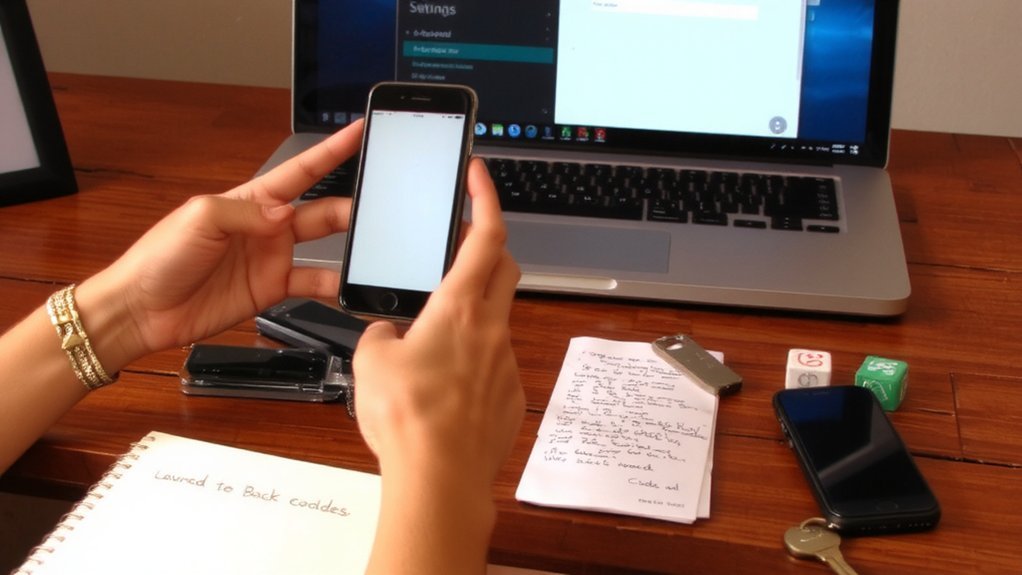If you’re ready to leave a social network, plan how you’ll preserve your data and protect linked accounts first. Decide between temporary deactivation and irreversible deletion. Cancel subscriptions, revoke connected apps, and transfer any business assets. Keep these priorities in mind, and you’ll be prepared to follow the precise steps to finish the job and avoid common pitfalls.
Reasons to Delete Your Social Media Account

Why are you still scrolling when it costs you sleep, focus, and peace of mind? You lose hours to endless feeds that amplify comparison, anxiety, and negativity.
You trade privacy for targeted ads, handing platforms data about your habits, location, and relationships. Your productivity dips as notifications interrupt deep work and fragment attention.
Social media can distort reality, encouraging echo chambers and polarized thinking that strain relationships and your mental health. If you’re trying to reclaim time, set boundaries, or reduce stress, deleting accounts simplifies life and removes temptation.
You’ll protect personal information, reduce digital clutter, and create space for real-world connections. Choosing to leave isn’t about isolation; it’s about prioritizing wellbeing and control over your attention. You deserve calm, focus, and intentional living.
Deactivation Vs Permanent Deletion: Which to Choose

Before you pull the plug completely, consider whether deactivation or permanent deletion better matches your goals: deactivation temporarily hides your profile and lets you return later, while permanent deletion removes your account and often erases data irreversibly.
If you want a break, deactivation is reversible, preserves messages and settings in many platforms, and lets you test life without the app.
If you need a clean break—no accidental logins, reduced data footprint, legal or privacy concerns—choose permanent deletion. Check platform timelines: some services delay final removal.
Remember, deactivation limits visibility but may leave data on company servers; deletion aims to remove your presence but can be irreversible.
Weigh convenience against permanence, then act according to how final you want this change. And proceed with confidence.
How to Back Up Your Data Before You Leave

If you want to keep photos, messages, and contacts, export them now so you don’t lose anything later. Go to each platform’s settings and look for “Download Your Data” or “Request Archive.”
Select date range, file types (photos, videos, messages, profile info), and preferred format (ZIP, JSON) before requesting. You’ll usually get an email when the archive’s ready; download it promptly.
Verify the files open and include what you need—check folders for message histories and media quality. Store copies in two places: an external drive and a secure cloud service you control.
Keep the archive encrypted or password‑protected if it contains sensitive info. Once you’ve confirmed backups, you’ll be ready to proceed with account deletion.
Also check each service’s retention windows and export accordingly.
Preparing Your Accounts: Passwords, Recovery, and Linked Apps

When you’re preparing to delete accounts, gather and update your passwords, recovery contacts, and any connected apps so you won’t get locked out or leave access points open.
Start by confirming current passwords for each service and updating weak or reused ones.
Verify recovery email addresses and phone numbers; add an alternate contact you control.
Review two-factor methods: keep backup codes, transfer authenticator entries, or switch to a device you’ll retain.
Check OAuth and connected apps, revoke permissions for services you won’t need, and remove saved API tokens.
If accounts tie to subscriptions or shared services, transfer ownership or cancel billing.
Document changes securely so you can close accounts without unintended disruption.
Keep a secure checklist and delete credentials only after successful transfer completion.
Step-by-Step Deletion Processes for Major Platforms

As you tackle each major platform—Facebook, X (Twitter), Instagram, Google, Apple, Microsoft, LinkedIn, Reddit, and TikTok—follow the platform-specific steps below: confirm account access, export your data, revoke connected apps and API tokens, cancel subscriptions or transfer ownership, then initiate deletion and note any waiting periods or recovery options.
For Facebook, go to Settings > Your Facebook Information, download your archive, deactivate or delete and note 30-day recovery window.
On X, request your archive, disconnect apps, then deactivate; account is removed after 30 days.
For Instagram, use Account Settings to download data and request deletion; you’ll have a grace period.
Google and Apple require account services review and data export before delete.
Microsoft, LinkedIn, Reddit and TikTok provide export and closure flows—follow prompts; note timeframes.
Cleaning Up Posts and Personal Information First
Although deletion removes your profile eventually, it won’t erase every stray post or shared file immediately, so start by auditing and removing sensitive posts, photos, tags, and location history across platforms.
Go through recent and older posts, deleting anything that reveals personal data—IDs, addresses, phone numbers, financial details, or intimate photos.
Untag yourself from friends’ posts and ask them to remove shared media.
Clear check-ins and location history in each app’s privacy settings.
Review old messages and groups; delete or export conversations that contain private information.
Update or remove profile fields such as birthday, contact email, and employer before you delete the account.
Finally, search your username and email to find overlooked content on forums or sites, then request removals or use reporting tools.
Managing Business Pages, Ads, and Connected Services
Before you delete a personal account, make sure you reclaim or close any business pages, ad accounts, and third‑party connections tied to it so they don’t become orphaned or keep billing you.
Check admin roles first: transfer ownership or assign another admin for pages, groups, and apps.
Pause or cancel active ad campaigns and remove saved payment methods in the ad manager to stop charges.
Review integrations—analytics, CRM tools, app logins, scheduled posts—and disconnect or update credentials.
Export business data you’ll need later: insights, order histories, customer contacts.
Notify collaborators and clients about changes and provide new access instructions.
After everything’s transferred and payments stopped, proceed with deleting your personal account to avoid service interruptions or lost business data or unexpected billing after deletion.
Psychological Strategies to Stay Logged Out
If you want to stay logged out, create a simple plan that replaces checking with specific alternatives, adds friction, and uses accountability: set clear goals and fixed times for allowed checks, turn off push notifications and remove bookmarks, log out after each session and uninstall extra apps, add short delay rules (wait 10 minutes and do a breathing exercise), tell a friend who’ll hold you accountable, and reward yourself for streaks.
Notice triggers and plan replacements—read, walk, call, or journal—so you don’t substitute scrolling with passive ruminating.
Use visible cues like a note on your device, schedule low-effort hobbies, and track wins.
When urges hit, practice a brief grounding technique, reassess goals weekly, and adjust rewards to stay motivated and celebrate milestones.
Technical Steps: Logging Out Everywhere and Removing Apps
When you’re ready, start by logging out of every device and removing the apps that make re-entry easy. Go through your phone, tablet, laptop, smart TV and any shared computers; sign out in each app or use the platform’s “log out of all sessions” option.
Uninstall mobile apps and remove web shortcuts and saved logins from browsers and password managers. Revoke connected apps and permissions from the account’s security or apps section so third parties no longer have access.
Disable automatic sign-in, clear cookies and cached site data, and turn off push notifications. Remove account entries from social integrations on other services and unlink email forwarding. These steps reduce the chance you’ll be auto-signed in and make the deletion process cleaner and more final.
Confirming Deletion and What Data Platforms May Still Keep
After you’ve logged out and removed apps, you’ll need to confirm the account is truly scheduled for deletion and understand what the platform may still retain.
Check for confirmation emails, on-screen notices, or a deletion status in account settings; screenshot or save those as proof.
Note the platform may retain backups, logs, and content copies for a limited period for legal, security, or operational reasons.
Personal data you deleted might persist in backups or third-party caches.
If you want more, request data deletion or a record under privacy tools (GDPR, CCPA) and follow the appeal/verification steps.
Monitor your email for final confirmation and any reactivation window.
If you see unexpected activity, contact support immediately and document all correspondence.
Save copies of all responses received.
Conclusion
You’re ready to leave when you’ve backed up data, canceled subscriptions, transferred business assets, revoked app access, and saved recovery codes. Choose deactivation for a break or permanent deletion for good, then follow the platform’s flow and confirm any emails. Keep copies of confirmations, monitor your email for finalization, and contact support if something goes wrong. Stick to your decision, use practical strategies to avoid logging back in, and protect your remaining accounts as well.